They say where there’s smoke; there’s fire. But when white smoke suddenly comes out of your exhaust pipe when you start your car, then just as suddenly disappears, you may think that it’s nothing serious – but is it? Why exactly is there white smoke on startup then disappears, and what does it mean?
There are several reasons why white smoke comes out of your exhaust when you’re starting your car. Common reasons include the buildup of water in the exhaust pipe and a leaking head gasket that causes the engine to consume the coolant. At any rate, it shouldn’t be taken lightly and should be considered a sign that something in your car needs to be fixed as soon as possible.
Read on to know more about what causes white smoke on startup, then disappears and what to do about it.
White Smoke On Startup Then Disappears
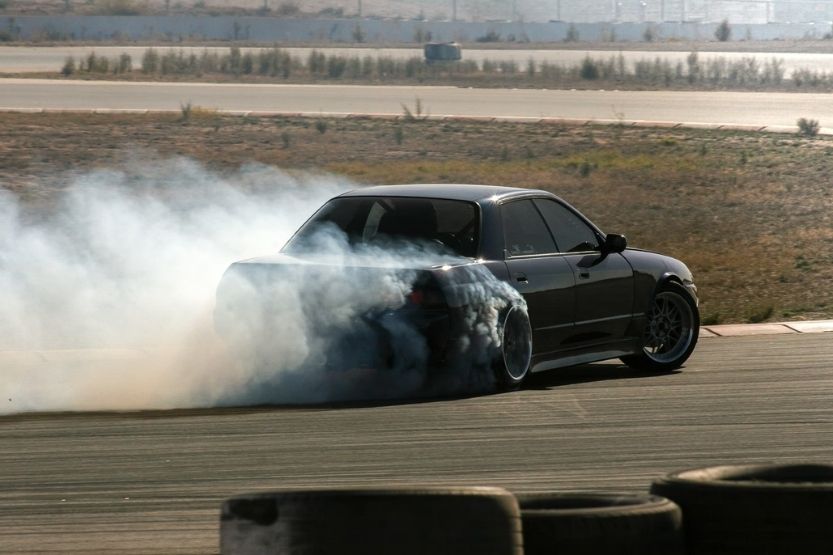
There are several reasons why white smoke comes out of your exhaust every time you start your car. One reason is that it could be a buildup of water in the exhaust pipe.
Another may be that a leaking head gasket is causing the coolant to be consumed by the engine. At any rate, it shouldn’t be taken lightly and should be considered a sign that something in your car needs to be fixed as soon as possible.
It is certainly suspicious when white smoke suddenly blows out of your exhaust after starting your car. But when this occurs, don’t start panicking just yet and observe what happens next.
The smoke may disappear after a couple of minutes. In which case, it’s probably just the water in the tailpipe becoming steam due to the engine’s heat. But it’s also possible that the smoke remains after five minutes. In which case, you need to explore what causes this and take care of it right away.
Why Does the White Smoke on Startup Smell Like Gas
Usually, the white smoke from startup only turns out to be water vapor or steam. This could be due to extra condensation and water coming from the tailpipe. It could be resulting from a leak in the head gasket or water getting into the fuel tank.
However, this may also be caused by an engine misfire pushing out unused excess fuel. This can result in the white smoke on startup accompanied by a noticeable gasoline smell.
White Smoke On Startup Then Disappears – Causes
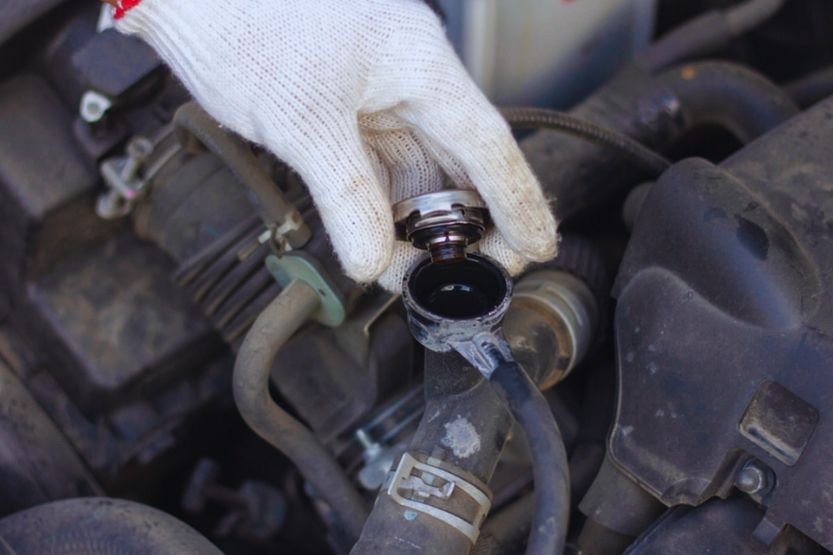
Here are a few other reasons why white smoke is coming out of your exhaust on startup:
- Condensation
- Leaking Coolant
- Leaking Piston Ring or Valve Seal
- Fuel Injector Damage
- Incorrect Injection Pump Timing
- Dirty Air Filter
- Transmission Fluid
1. Condensation
White smoke when starting a car can usually happen in areas with cooler climates. This is especially true in places with a lot of dew during the mornings. This will cause condensation to build up in the windows and internal parts of your car.
When you notice white smoke on startup only in cold weather, this is the likely cause, and it isn’t a severe problem. Once the dew dries up, the smoke would disappear, and your car should be back to normal. But if your exhaust is blowing white smoke in a warm climate, there could be an internal issue that requires your attention.
2. Leaking Coolant
White smoke can come out when you start the car after the engine has warmed up and you’ve driven for a few minutes. This indicates that the engine or the exhaust pipe has suffered a coolant leak.
Coolant Is Responsible for Reduction of Engine’s Temperature
The coolant is responsible for reducing the engine’s temperature. It also provides lubrication to the car’s internal components to keep it operating properly. If it leaks, the engine won’t be able to cool itself, causing it to overheat. Aside from white smoke, there is also an unpleasant odor, or even a sweet smell, that you and everyone else in the car will notice.
Internal Engine Issues
A coolant leak is mainly caused by either internal engine issues or a damaged cylinder head. The cylinder head houses components such as the intake and exhaust valves to aid in the circulation of the coolant. Even the slightest crack or puncture can cause the coolant to spill out and contaminate the engine block.
When the coolant level in your car declines, the high temperature and excessive friction will lead the engine to overheat. It will also cause gasket failure if it is not dealt with in time.
3. Leaking Piston Ring or Valve Seal
A damaged piston ring or a leaking valve seal can also cause white smoke when starting the car. When this occurs, the oil will leak and mix with the fuel inside the combustion chamber. It will disrupt the internal combustion engine’s air to fuel mixture ratio, which helps your car start.
As soon as the white smoke rises from the exhaust, take your car to a mechanic for piston ring or valve seal inspection. If you opt to fix it yourself, check both the oil reservoir and the coolant reservoir to determine if the liquid level is normal. If they aren’t, then you can determine where the leak is coming from.
4. Fuel Injector Damage
Transfers the Gasoline Into the Combustion Chamber
The fuel injector transfers the gasoline into the combustion chamber. It is where it will be ignited to generate the power used by the engine to operate.
Failure to Deliver the Right Amount of Fuel
If the fuel injector gets damaged, it will not deliver the right amount of fuel to the combustion chamber. An example of a damaged fuel injector is if it gets stuck permanently in the closed or open position.
Disruption of Air and Fuel Mixture
Too much or too little fuel delivered will disrupt the air and fuel mixture. If too little fuel is delivered, the car’s internal components won’t be able to function. If the fuel delivered is too much, the excess gasoline will not properly combust in the engine. This will cause the white smoke to come out on startup and disappear.
Not Too Expensive and Difficult to Repair
To repair or replace a faulty fuel injector or O-ring, you must determine which fuel injector has been damaged. It also depends on the car’s mileage and the current condition of the mechanism. Replacing a fuel injector isn’t difficult as they aren’t too expensive to fix or replace compared to other parts.
5. Incorrect Injection Pump Timing
The fuel injection pump is required to have accurate timing. This way, the fuel is transferred to the combustion chamber at the precise time to be ignited and fully converted to energy.
Otherwise, if the fuel is sent in too early or too late, the combustion chamber won’t be able to burn all of it. This will cause residual compounds to leak out of the exhaust and produce white smoke on startup.
6. Dirty Air Filter
The air filter makes sure that dust from outside is kept out as air enters into the engine. However, long-term use will eventually cause the filter to lose its effectiveness over time. As the filter gets dirtier, more dirt from the outside will get into the engine’s air. This will affect the fuel transmitted, resulting in the white smoke.
7. Transmission Fluid
The white smoke coming out of your exhaust on startup may be related to the transmission fluid. It could mean that your car’s engine takes too much transmission fluid from the hose or the vacuum pipe. This will cause your car to burn up excess oil, producing a noticeable burnt smell.
Again, white smoke on startup then disappears – what causes this issue? White smoke on startup which eventually disappears might be due to a coolant leak. A coolant helps maintain an engine’s temperature, and it also lubricates components for the car to operate smoothly.
How to Get Rid of White Smoke on Startup
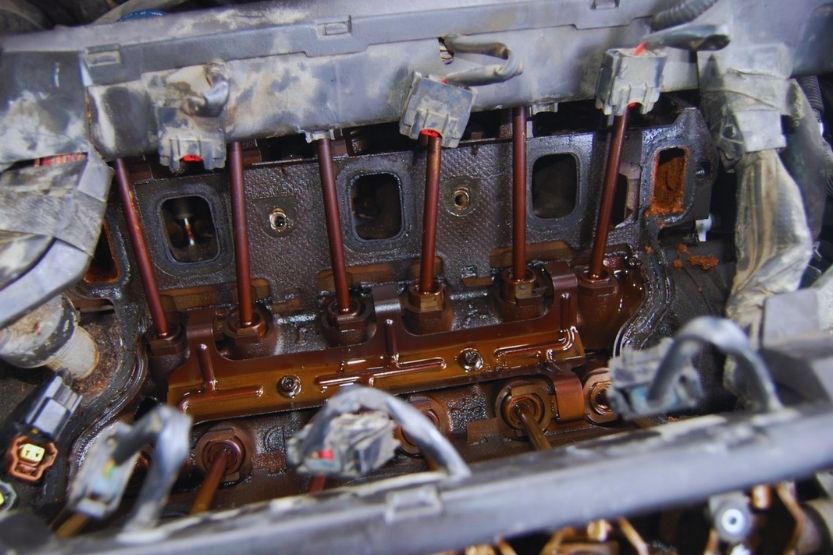
So, what’s next once you’ve determined what causes the white smoke from your exhaust when you start your car? You need to take care of the problem before it spreads to the rest of your vehicle. You are advised to take your car to a reliable mechanic, but if you decide to fix it by yourself, here are some steps that you can follow:
- Inspect the Intake Gasket
- Assess the Head Gasket
- Examine the Cylinder Head for Cracks
- Check the Fuel System
- Clean the Air Filter
- Perform Routine Piston Maintenance
1. Inspect the Intake Gasket
Intake Gasket’s Functions
There is a gasket in your car which seals the manifold to the head. Along with the manifold, it distributes the air and fuel mixture within the car. It also transports the necessary coolant to the intake port to cool the mechanism down.
Causes the Coolant to Leak When Damaged
The intake port is one of a few other places on the cylinder heads. If even one of them is damaged over time, it will cause the coolant to leak into the port and the combustion chamber.
Remove and Repair the Intake Manifold
To repair the leaking intake ports, you need to remove the intake manifold. If you find any trace of damage on the intake manifold or the intake gasket, you have found the part that needs to be fixed. But if the manifold and gasket are not the causes of the white smoke, examine the head gasket.
2. Assess the Head Gasket
The head gasket seals the cylinder head to keep the coolant from leaking out to the cylinder. The gasket can get damaged or leak in the liquid lines which transport the essential coolant and oil. In which case, the coolant will leak into the chamber and produce white smoke on startup.
If you’ve verified that the head gasket is undamaged and tightly sealed with no leaks, check on the cylinder head next.
Cracked Head Gasket Symptoms and Signs
3. Examine the Cylinder Head for Cracks
Connects the Engine Block and Head Gasket
The cylinder head connects the engine block and the head gasket, serving as a transportation bridge between them. However, it tends to break if the car overheats. Also, there is excessive friction between the metal parts.
Quite Expensive to Replace
If the cylinder head breaks or gets damaged, you will need to replace it. Unfortunately, it can get quite expensive, costing you at least $500, including parts and labor expenses. If you decide to install the cylinder head yourself, it would cost you around $200 to $400 on parts alone.
But if you include labor costs at around $90 to $100 per hour, you will be spending more. It can be a total of at least $500, depending on the make and model of your car.
4. Check the Fuel System
Among the components of the fuel system are the fuel injector and the fuel injection pump. If the system runs into a problem, the transfer of fuel in your car won’t be accurate. It will cause the gasoline to leak.
You need to check the fuel system thoroughly to ensure the accurate timing of the fuel transfer. This can either have it done at your local service shop or do the testing at home.
5. Clean the Air Filter
Due to the air filter’s exposure to outside elements, it accumulates dirt quickly. Regularly cleaning your air filter is necessary. This ensures that the quality of air from the outside always maintains stability. It is suggested that you do your cleaning between 1500 to 2500 miles of travel time.
6. Perform Routine Piston Maintenance
Piston rings are easily prone to rust due to their constant contact with fuel. Hence, they require periodic cleaning and maintenance to guarantee their operational stability.
Conclusion – White Smoke on Startup then Disappears [Causes and Solutions]
There are several reasons why white smoke comes out of your exhaust every time you start your car. One reason is that it could be a buildup of water in the exhaust pipe. Another may be that a leaking head gasket is causing the coolant to be consumed by the engine.
At any rate, it shouldn’t be taken lightly and should be considered a sign that something in your car needs to be fixed as soon as possible.
The emergence of white smoke from a car’s exhaust is a very common phenomenon and a particularly tricky one to identify. It could simply be an effect of the climate or caused by a dirty air filter and could just as quickly be taken care of.
On the other hand, it could be a symptom of a serious internal issue with your car’s engine. Whichever the case may be, when your car starts making smoke signals, it is best to take it as a warning sign. Heed it before the problem gets worse.
Related reading:
Check Fuel Fill Inlet – Ford – [How to Fix]
Valve Lapping [What Is It and How to Lap Valves?]
White Smoke Coming From Exhaust [Startup, Idle, or Accelerating]

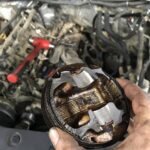

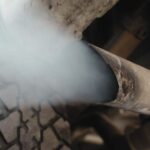



![Read more about the article Stabilizer Bar Link [What It Is and Its Purpose]](https://roadsumo.com/wp-content/uploads/2021/11/stabilizer-bar-link-300x200.jpg)

